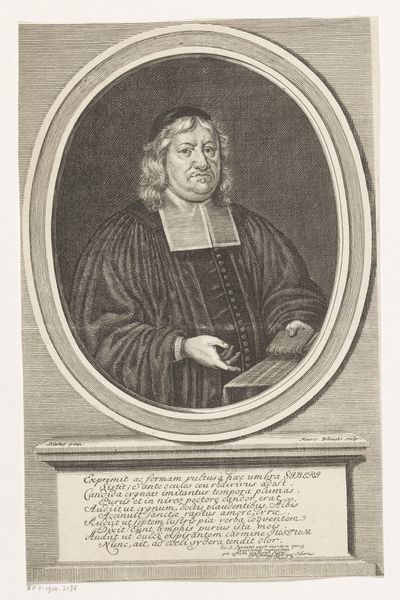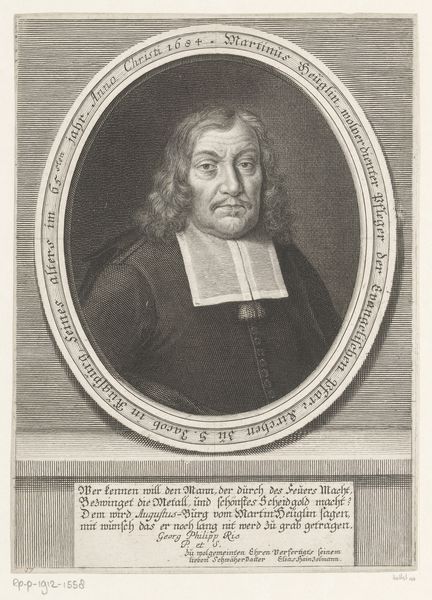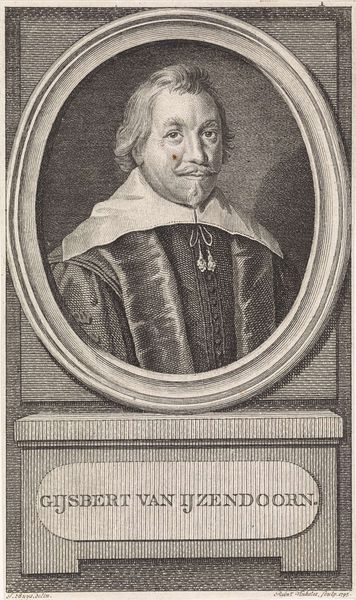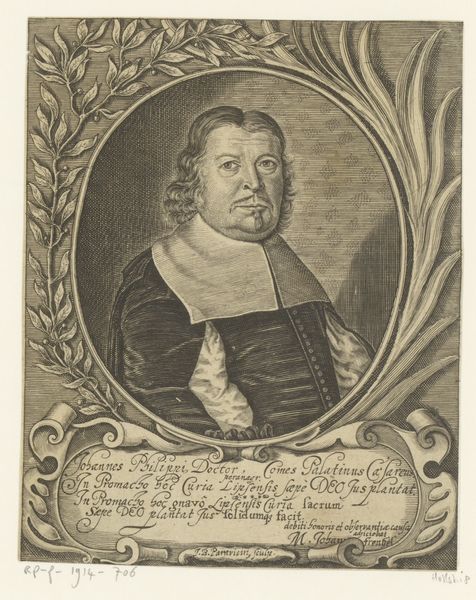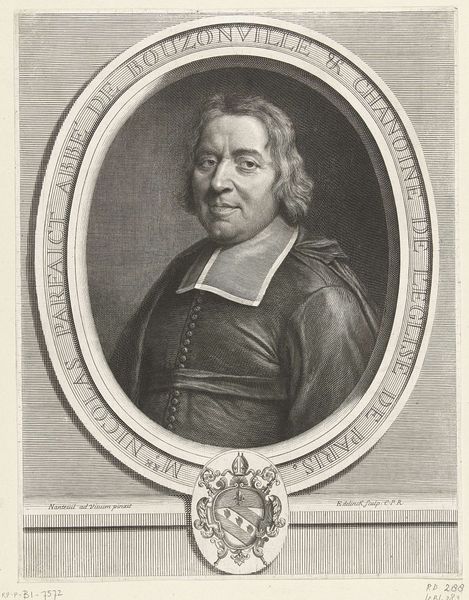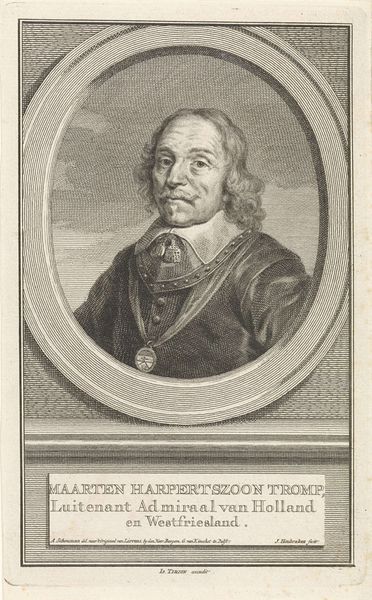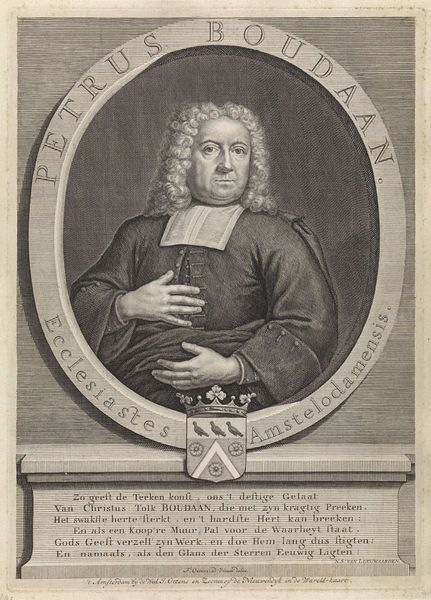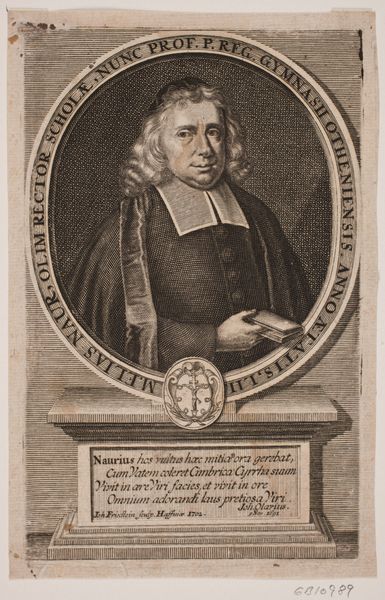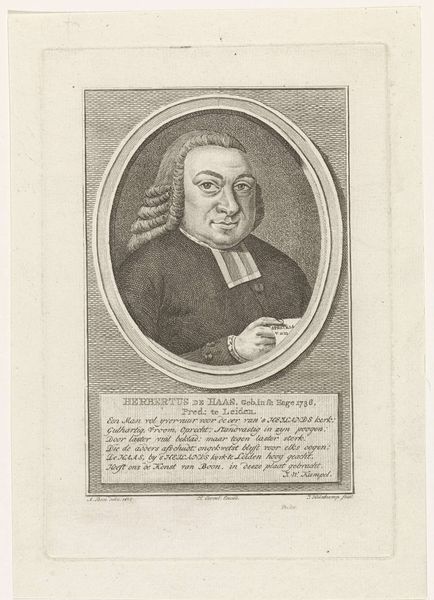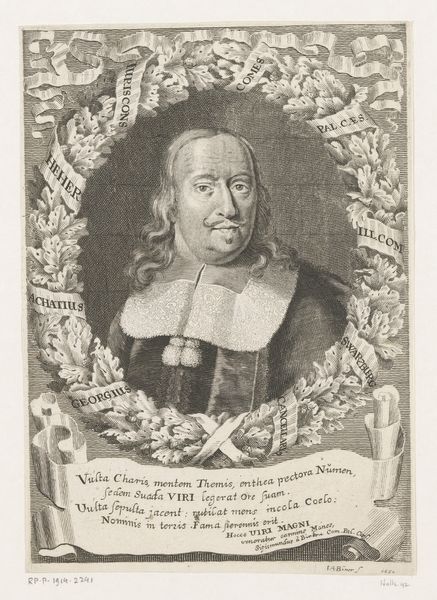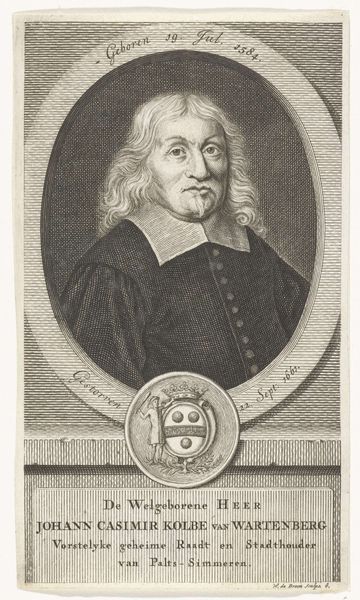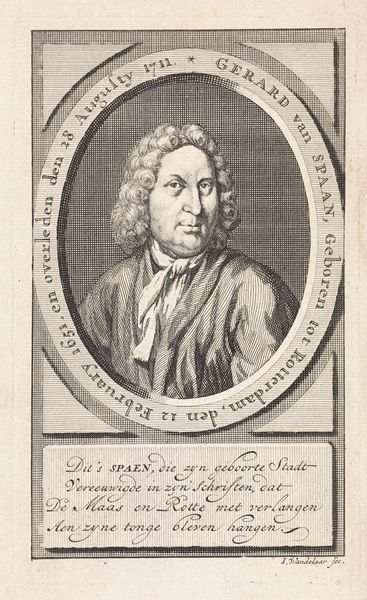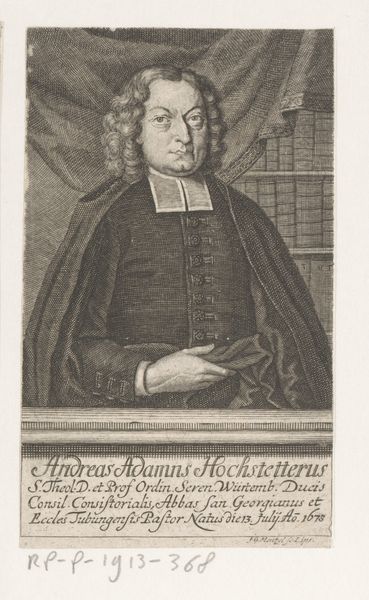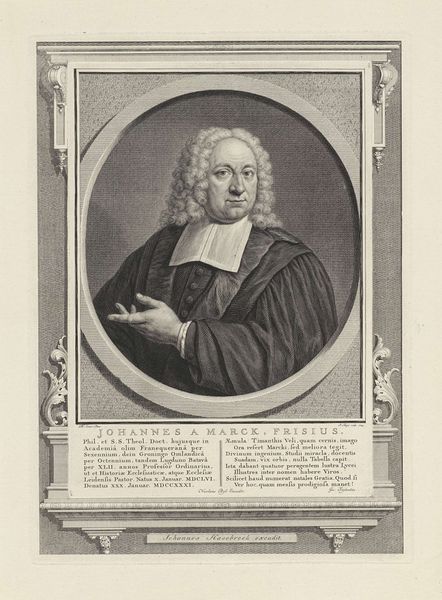
engraving
#
portrait
#
baroque
#
old engraving style
#
portrait drawing
#
history-painting
#
engraving
Dimensions: height 208 mm, width 164 mm
Copyright: Rijks Museum: Open Domain
Editor: Here we have an engraving titled "Portret van Henricus Velsen" by Ernst Ludwig Creite, created sometime between 1744 and 1765. It's striking how detailed the lines are, especially for an engraving. What do you see when you look at this portrait? Curator: This piece speaks volumes about the societal values of the time, doesn't it? The Baroque era was a period defined by ornamentation and grandeur, but also, importantly, a rigid social hierarchy. This portrait isn't just an image of a man; it’s a constructed representation of authority and status. Consider how the inscription positions Velsen in relation to "God" and the "Inlandsch Pronk-Gesteente," locating him within discourses of faith and nation. Who was Velsen? How do you interpret his representation within the historical context of Dutch society during this period? Editor: From the inscription, it seems he was a prominent figure in the Hague church community. Perhaps the artist used the conventions of portraiture to underscore Velsen’s respectability? Curator: Precisely! The choice of engraving, a medium often used for disseminating information and celebrating public figures, elevates Velsen. His pose and attire speak to this performance of status, but also point to broader questions about religious authority, social standing, and the visual languages employed to maintain such structures. The very act of memorializing him in this way highlights the cultural and ideological work portraits performed in 18th-century Dutch society. Editor: That makes me see the portrait not just as a likeness, but as a carefully crafted statement about power and societal roles. Curator: Exactly. By understanding these visual codes, we can begin to deconstruct the messages these images convey about class, belief, and the historical moment in which they were created. Hopefully this helps us connect the historical artwork with our world today.
Comments
No comments
Be the first to comment and join the conversation on the ultimate creative platform.
